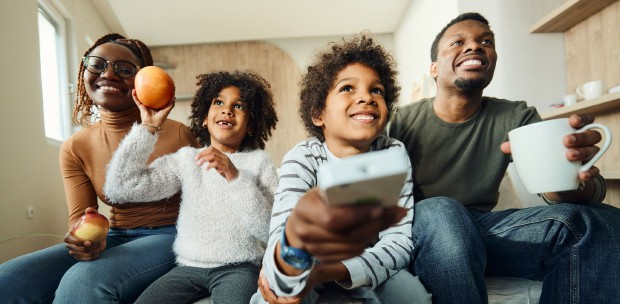MY excitement at visiting Pulau Ketam quickly turned from exhilaration to disbelief. Then I felt ashamed looking at the plastic bags clutched in my hands, filled with cheap seafood and dried cuttlefish.
All it had taken was a moment’s distraction. In a well-practised sleight of hand, the cashier had double-bagged in plastic my fresh seafood order, which were already encased in two protective layers of plastic. I briefly contemplated appealing for the liberation of my purchases but (to my shame) chose the path of least resistance. The deed was done, and the purveyors of plastic had been victorious on this occasion.
The scenic quaint heritage village located a mere 45 minutes from Port Klang offers a lot for visitors – cheap trinkets, fresh seafood and Chinese cuisine at reasonable prices. Beautiful wooden homes on stilts are the main feature and attraction for sightseers. Yet peering through the gaps between houses, and the beach surrounding this little fishing enclave tells a different story. Plastic bags, construction debris, bottles, discarded tyres and all sorts of garbage are seen clogging drains and waterways.
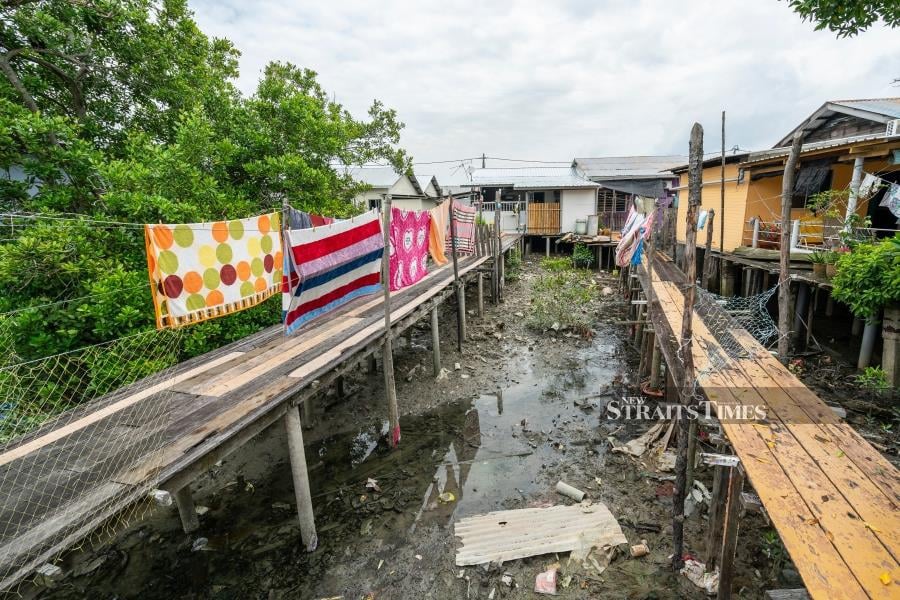
But this isn’t simply a story of improper waste management that’s a perennial issue faced by this fishing village. Some 20 per cent of waste gets washed from the mainland to the island due to its close proximity – making it a catchment area for waste that floats in our ocean. What’s worse? Discarded plastic bags and plastic bottles seem to dominate the flotsam and jetsam that wind up on the island’s shores and into their drains and waterways.
It’s easy to wave a finger at the island’s residents and demand they do something about the reeking garbage that collects beneath their houses. The truth of the matter is this: Those plastic bags, those empty bottles? They could easily be ours. If what has winded up on the shores of islands such as Pulau Ketam is shocking, then what about the plastic discards that still float in our rivers and oceans?
Are you a consumer of plastic? If you are, then the problem of these things clogging our seas and waterways is ours collectively. With International Plastic Bag Free Day observed globally on July 3, perhaps it’s time we took a serious view on the impact we’re making on our environment.
INCONVENIENT TRUTH

It’s convenient to use a plastic bag. Walk into any grocery shop to buy your monthly provisions, and chances are you’d have walked out lugging a plastic bag filled with your purchases. It’s hygienic, light in weight and yet considerably strong. Easily produced and accessible, it’s a common item used in almost every household across the globe.
It wasn’t always thus. In the late 1970s, single-use plastic bags were seldom available in grocery stores and shopping outlets. Since then, they’ve become an omnipresent part of the exchange of merchandise for money, a “free” offering to consecrate the ritual. An estimated one trillion bags are used each year globally, but they’re so seamlessly ingrained into our daily routines that we hardly notice. It’s difficult to imagine life without them.
The use of plastic bags has expanded due to its high versatility. Plastic bags are made from both natural gas and petroleum. The production of plastics account for only four per cent of the world oil consumption and yet an even less amount of this is used for the production of plastic bags. However, plastic production and disposal also generates around 400 million tonnes of carbon dioxide a year globally, more than total annual emissions from Britain!
Imagine this: A recent research by the Centre of International Environmental Law estimates that just the production and incineration of plastics will add 850 million metric tonnes of greenhouse gases to the atmosphere this year, which they calculate, is equivalent to the emissions from 189 new 500-megawatt coal-fired power plants.
The United Nations Environment Programme estimates that some eight million tonnes of plastic waste end up in the oceans each year, while a 2016 World Economic Forum report projects that there’ll be more plastic than fish by weight in the oceans by 2050 — if current trends continue.
ENVIRONMENTAL CATASTROPHE
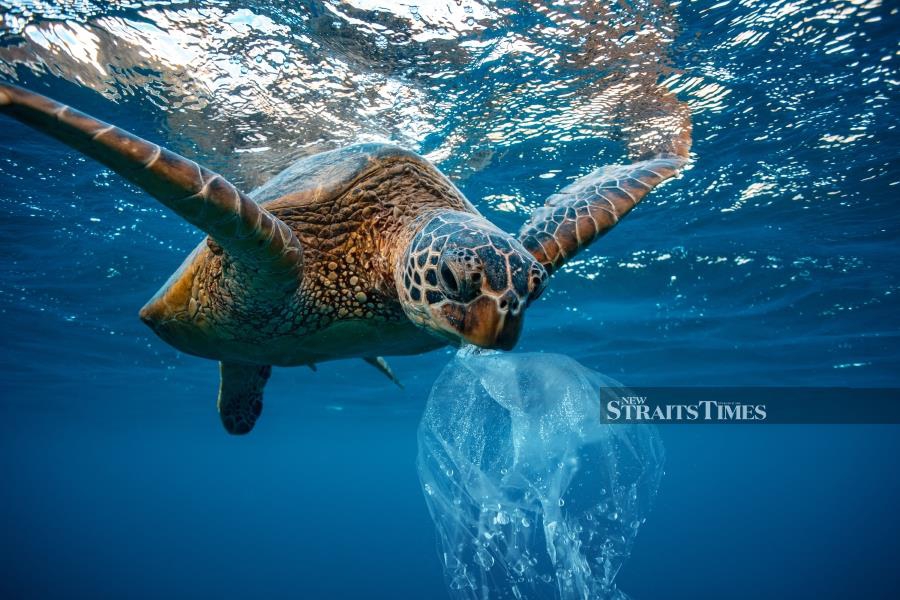
Millions of whales, birds, seals and turtles die because they mistake plastic bags for food or because they become ensnared in nets, packing bands and other items. Trillions of microplastics end up in the ocean, with seafood eaters ingesting an estimated 11,000 tiny pieces annually.
Plastic doesn’t decompose, but photo-degrades into small bits. These bits look like food so are eaten by the small fish at the bottom of the food chain in oceans. Then the bigger fish and other mammals eat these plastics and the associated toxins accumulate in them. These plastic bits eventually end up in people's food or contaminate salt extracted for human consumption.
The floating bags accumulate and add to other plastic items that form gyres. There are five huge garbage islands in the Pacific. These are growing in size over the years; in 2016 "The Great Pacific Gyre" was 999,735 sq km wide, with a periphery or outer circle of 3,499,073 sq km according to The Guardian.
Plastic fibres have also been found in tap water around the world; in one study, researchers found that 94 per cent of water samples in the United States were affected. The impact on human health from direct exposure to microplastics is unknown.
Much of our resource-intensive consumerism is still mindless, despite rising awareness of the impact of our plastic waste. Amid the hustle and convenience of a grocery store, it’s hard to connect our own behaviour to the distant problems in the depths of the oceans.
But the dozens of perfectly-intact plastic bags pulled from the stomach of a dead Cuvier’s beaked whale in the Philippines in March could have been from any of us. The juvenile Cuvier’s beaked whale died of “gastric shock” after swallowing 40kg of plastic bags, according to marine biologists at the D’Bone Collector Museum, a natural history institution in Davao City. Closer to home, a whale shark was found dead in waters off the Tanjung Aru beach with a big plastic bag stuck in its stomach in February this year.
It’s estimated that in 2010 Malaysia produced 940 million kilogrammes of mismanaged plastic waste, of which 140-370 million kilogrammes of plastic waste might have been washed into the oceans. Thirteen per cent of Malaysia's solid waste is plastic, of which 55 per cent is mismanaged. The Malaysian Plastics Manufacturers Association said in April 2018 that every Malaysian throws away 300 plastic bags a year on average.
FINDING A SOLUTION
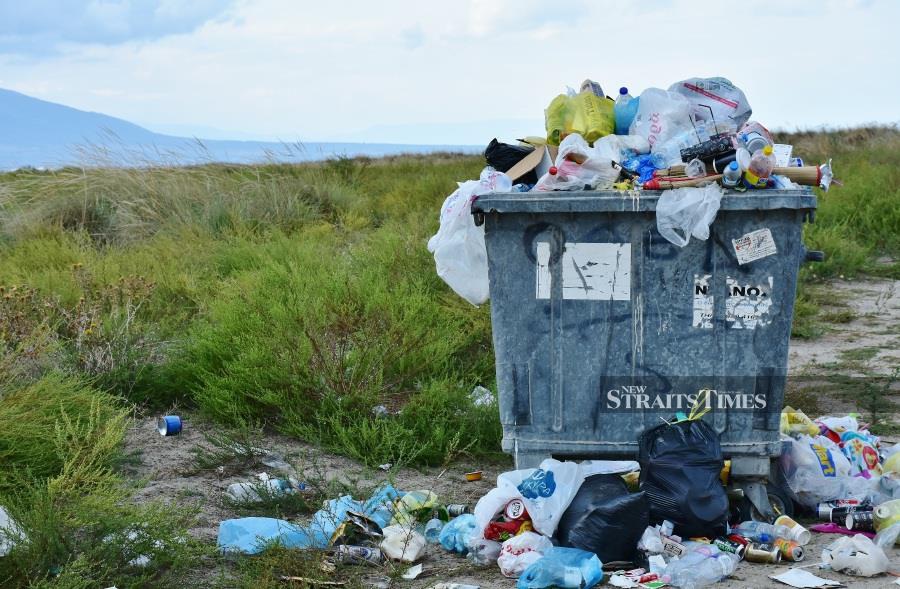
One of the most direct ways to begin to address this problem is by taking on the single-use plastic bag. The problem with plastic bags has been created by its over-consumption in the last four decades. People managed well enough before its advent. To maintain living standards, new commercial innovations could easily replace it, in the same way that alternate fuel cars are replacing the old gas models.
The war on plastic bags isn't new by any stretch. In 2002, Bangladesh became the first country to ban the use of thin plastic bags after it was discovered that a build-up of the bags choked the country's drainage systems during flooding. In almost two decades since then, more countries and individual cities have taken action, including taxing the use of the bags or following Bangladesh's lead and outright banning them.
And the scope of the war is expanding beyond bags. Plastic straws, bottles, utensils and food containers are all fronts in this ongoing battle, as the convenience and low cost of single-use plastic items is outweighed by the negative impacts they cause.
In an unprecedented move against plastic pollution in Southeast Asia, Malaysia has announced that it will eliminate single-use plastic by 2030. The Selangor State government has taken the step to enforce a ban on single-use plastics at all departments and agencies under the state’s administration effective next month.
The cultural impact can be game changing. As was the case with smoking indoors, the use of plastic bags will become less socially-acceptable over time once the government moves to restrict them. Reusable bags will become the norm quicker than one might imagine, and shoppers will seamlessly adapt their daily routines to the new reality.
When achieved, these small changes to our daily routines can be surprisingly empowering. We can do this and we must!
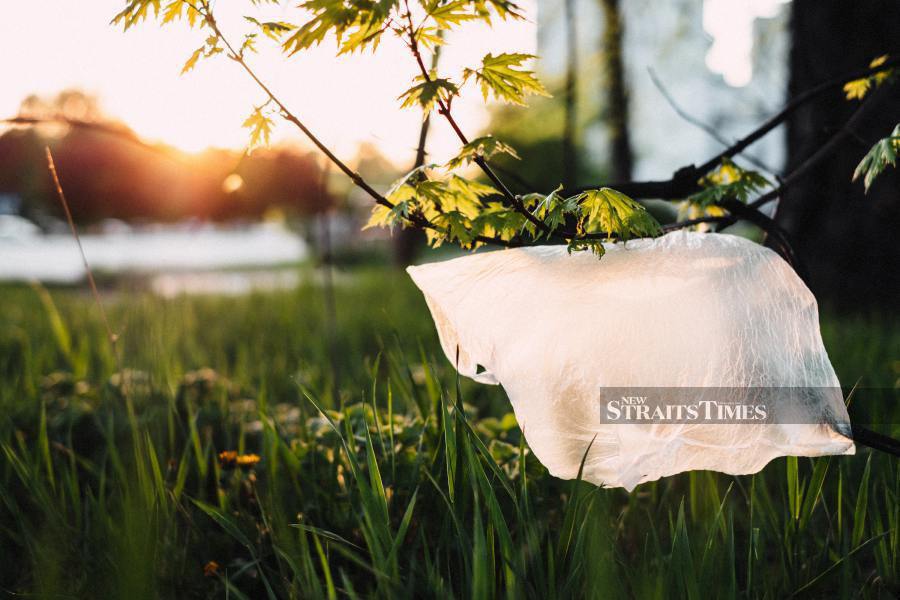
SHOCKING FACTS ABOUT PLASTIC
1. Up to 80 per cent of ocean plastic pollution enters the ocean from land.
2. At least 267 different species have been affected by plastic pollution in the ocean.
3. 100,000 marine animals are killed by plastic bags annually.
4. One in three leatherback sea turtles have been found with plastic in their stomachs.
5. Plastic bags are used for an average of 12 minutes.
6. It takes 500 (or more) years for a plastic bag to degrade in a landfill. Unfortunately, the bags don't break down completely but instead photo-degrade, becoming microplastics that absorb toxins and continue to pollute the environment.
7. According to a 2015 study in Science Magazine, Malaysia is the eighth worst country worldwide for plastic waste.
8. The Malaysian Plastics Manufacturers Association (MPMA) estimates that the average Malaysian uses 300 plastic bags per year. With a population of 30 million, the result is a whopping nine billion plastic bags used each year!

HOW YOU CAN MAKE A DIFFERENCE
1. Carry a reusable bag
This is Plastic-Free-Living 101. Take your own shopping bag with you whenever you visit the grocery store, shopping malls or pharmacy. Better still, carry one you could fold and fit into your bag so you don’t “forget” whenever you decide to make a purchase.
2. Use plastic-free containers
Glass or metal jars can be used to store grains, nuts, flour and other foods, as well as laundry detergent, dish soap and body creams. But don’t automatically purge all of your plastic containers because that would just create unnecessary waste.
3. Pack a travel kit
Bamboo cutlery and a non-plastic food tray, straw and water bottle will eliminate the need for most single-use plastics while on-the-go.
4. Buy in bulk
To avoid food packaging, shop the bulk aisle at the market and bring your own glass containers. Weigh the jar beforehand to avoid being overcharged.
5. Buy used items
Some household plastic is unavoidable, especially in modern appliances. So until they make an all-metal vacuum cleaner, consider buying secondhand, through a thrift shop or even platforms like Carousel. You’re not buying new plastic and you’re eliminating the need for packaging as well.
6. Recycle “good” plastics
Clear plastic bottles, bottles for shampoos, yogurt containers, toys and reusable food containers have a higher probability of being recycled. Disposable cutlery, cling wrap and coffee cups and lids have very low probability.
7. Make your own
With so many toiletries packaged in plastic, why not make your own toiletries? There’s a host of information on the Internet that teaches you how to make your own facial wash, scrub and shampoo from natural products like olive oil, yogurt and even nuts. What’s more, you’d be doing your skin a favour!
8. Do without
If it’s plastic or nothing, you can always choose nothing.
PLACES TO SHOP GUILT-FREE
The Hive Bulk Foods
Hive is the first zero waste store in Malaysia. At their stores in Ampang, Bangsar and Petaling Jaya, Hive offers over 300 bulk whole foods from nuts, seeds, butter, reusable lifestyle products, cleaning products, personal care products and more!
As a social enterprise, they work with local organic farmers, the Orang Asli community and charitable organisations. The Hive offers solutions to live sustainably.
Where: 92A, Lorong Maarof, Bangsar Park, KL| 1F, Hock Choon Supermarket, 241 Jalan Ampang,KL
NUDE, The Zero Waste Store
NUDE encourages the community to live by the Japanese principle of ikigai, which conveys "a reason for being”. Products such as the biodegradable soaps, shampoo bars, and cloth cotton pads at NUDE can help minimise your carbon footprint. They sell everything from foods to home care to personal care, absolutely package-free.
Where: 3G, Jalan 19/29, Seksyen 19, Petaling Jaya
Contact: 03 7498 0488 | [email protected] |
Facebook: NUDE The Zero Waste Store



